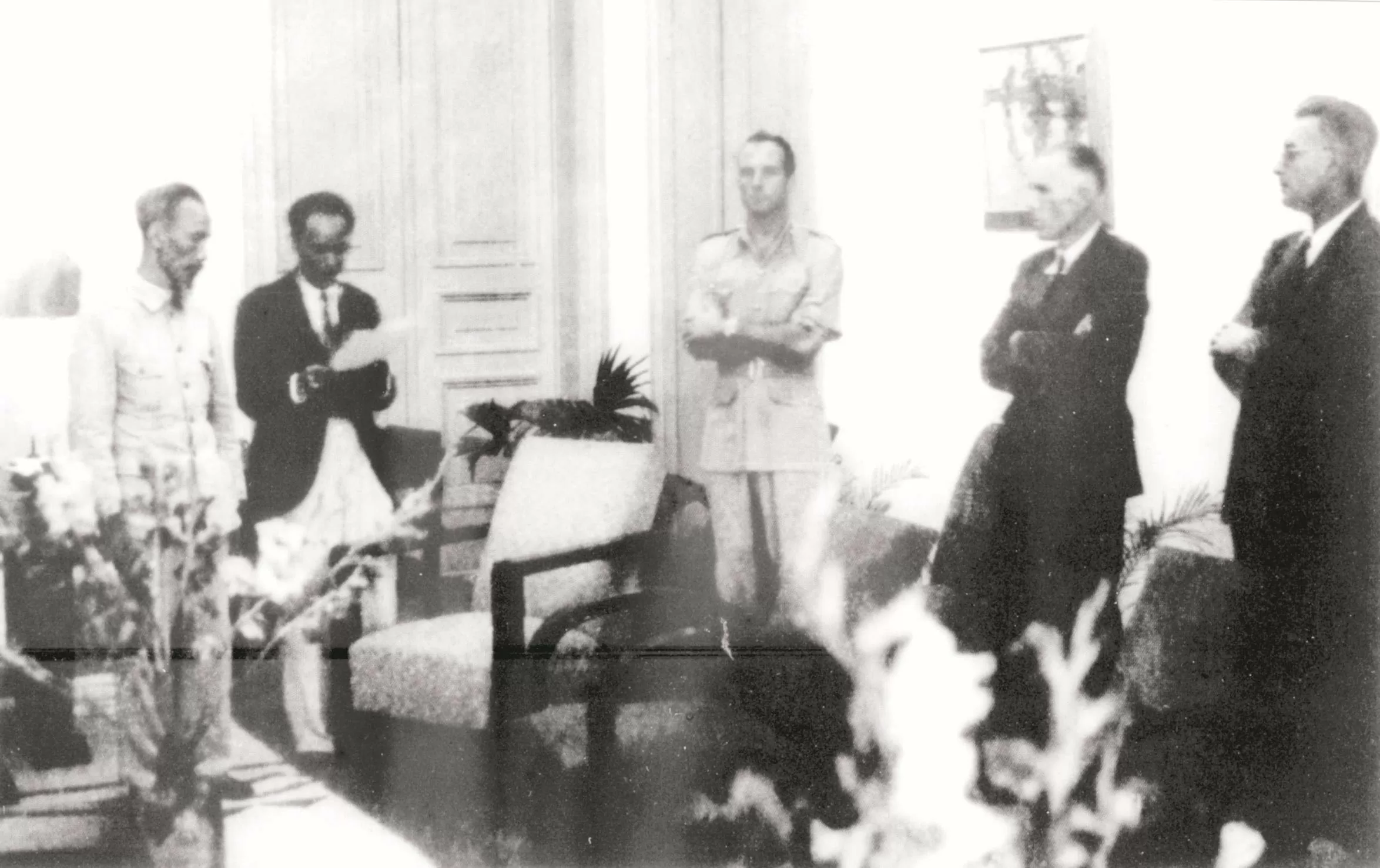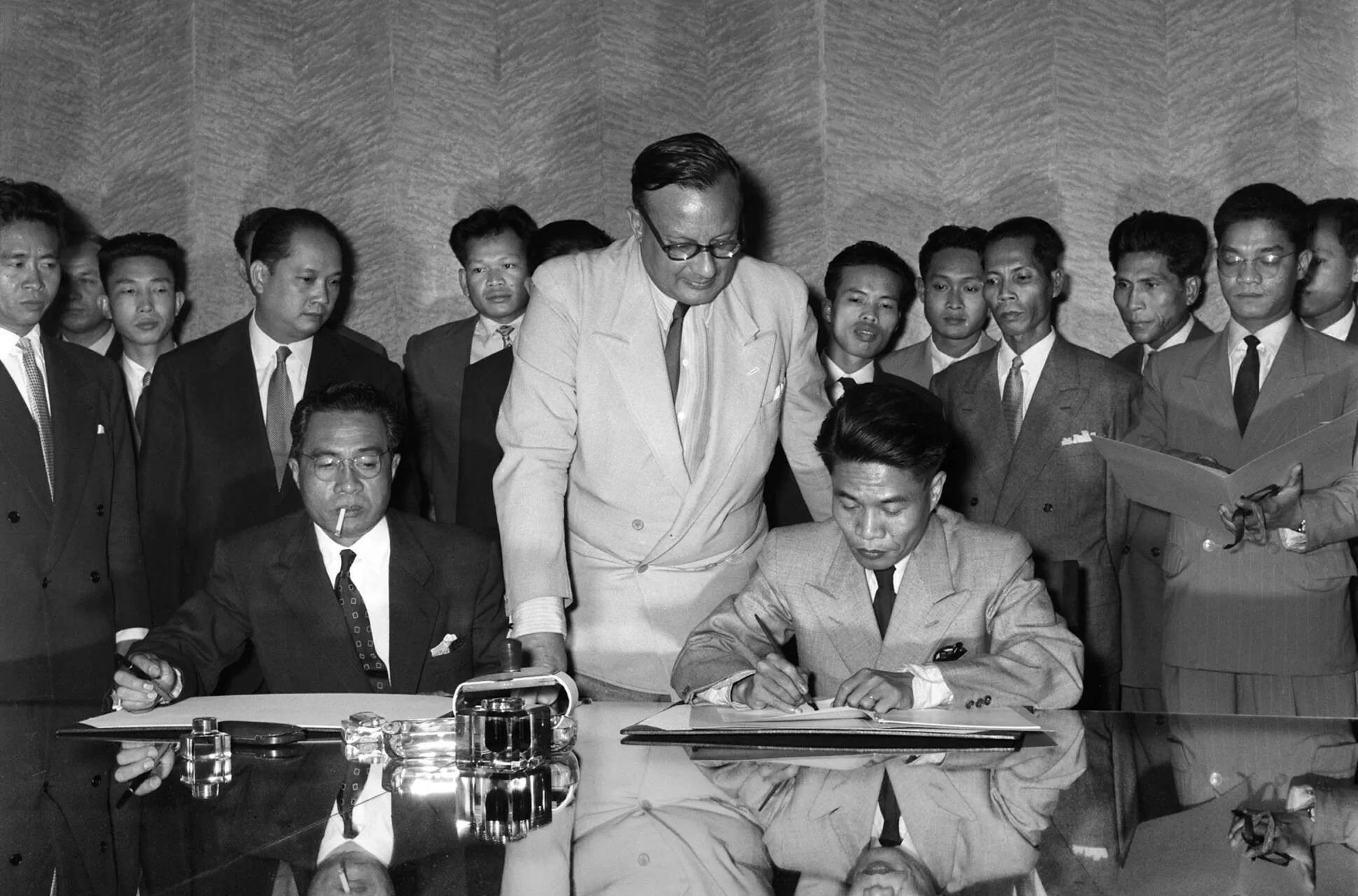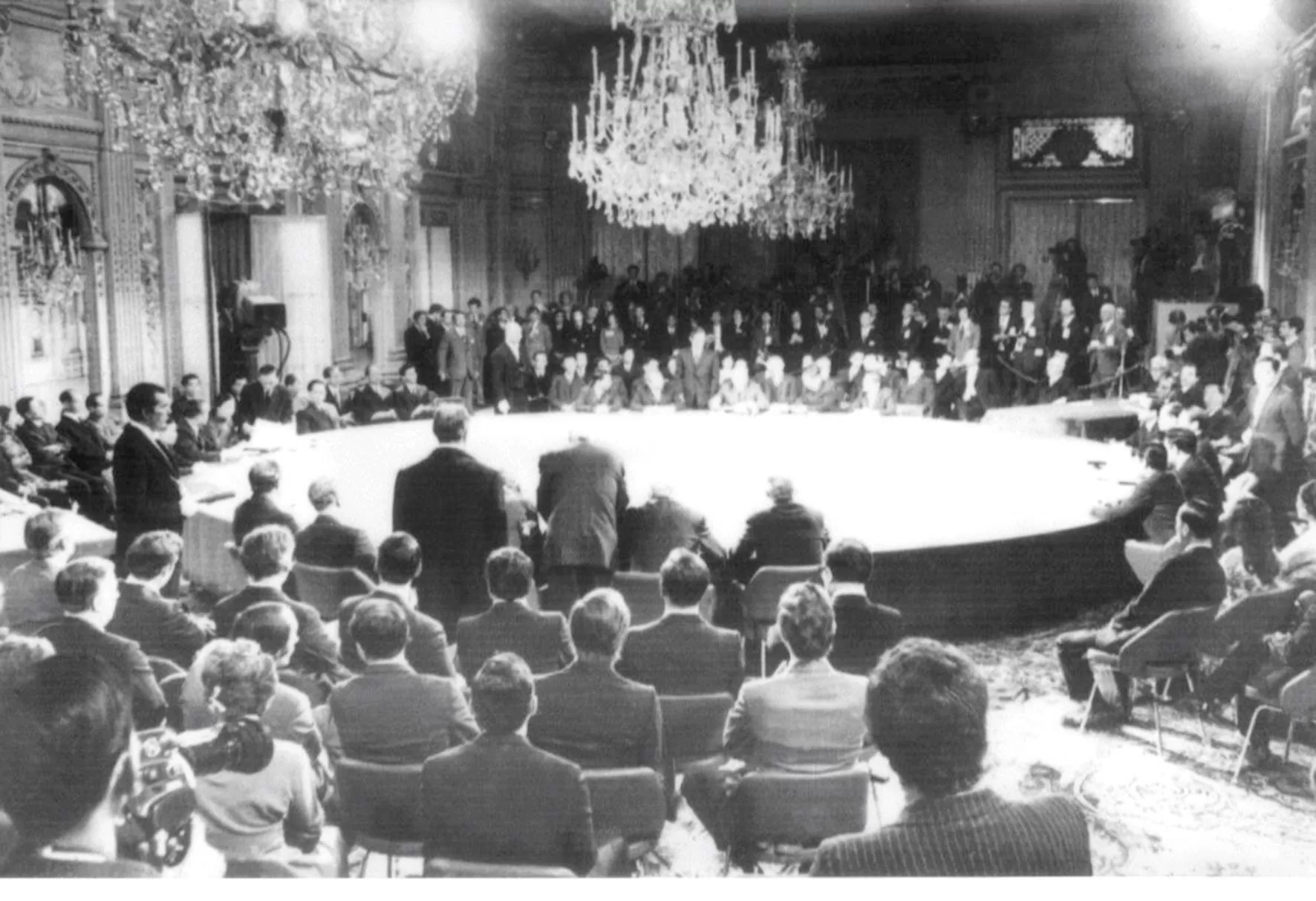
The similarities and differences of the Geneva accords with other agreements on ending the war in Vietnam
Latest
 |
| President Ho Chi Minh and Mr. G.Sainteny (middle), representatives of the French Government, and representatives of Allied countries listened to the reading of the Preliminary Agreement Document dated March 6, 1946 before signing. |
Similarities
In terms of context, both the Preliminary Agreement and the Geneva Accords were signed during Vietnam’s struggle for independence and freedom. Just 21 days after President Ho Chi Minh proclaimed the Declaration of Independence, establishing the Democratic Republic of Vietnam, France launched an attack on Saigon on September 23, 1945, attempting to occupy our country once again.
 |
| Assoc. Prof. Dr. Tran Nam Tien. |
To buy more time to prepare and consolidate the strength of the revolutionary government, and at the same time take advantage of conflicts among hostile forces, we pursued a peace policy towards France. On March 6, 1946, President Ho Chi Minh signed the Preliminary Agreement with France – the Democratic Republic of Vietnam’s first bilateral international agreement. This agreement permitted French troops to enter the North, replacing Chiang Kai-shek’s forces in disarming the Japanese military.
Nine years later, the Geneva Accords were signed after France suffered a heavy defeat at Dien Bien Phu, forcing France to sit at the negotiating table to find a way to end the war, withdraw its troops and acknowledge the right to self-determination of the peoples in Indochina.
If at the Geneva Accords, we had the victory at Dien Bien Phu, dealing a decisive blow to France’s colonial ambitions, then at the Paris Agreement, with the victory of the ‘‘Dien Bien Phu in the Air’’ in 1972, our troops and people completely thwart the United States’ invasion ambitions in Vietnam. As late Deputy Prime Minister Vu Khoan once said: ‘‘Without Dien Bien Phu, there would be no Geneva Accords. Similarly, without the ‘Dien Bien Phu in the Air,’ there would be no Paris Agreement in early 1973’’. Every success at the negotiation table has stemmed from victories on the battlefield. Just as President Ho Chi Minh affirmed the position and role of diplomatic work: ‘‘Military strength is the gong, diplomacy is its sound; the bigger the gong, the louder the sound’’. Thus, both agreements were signed after significant military victories of the Vietnamese people. Vietnam entered the Geneva Conference and the Paris Conference as a victorious nation, compelling the other side to recognize Vietnam’s basic national rights, commit to ending the war, and withdraw troops.
In terms of content and significance, the Preliminary Agreement, the Geneva Accords, and the Paris Agreement all have the common goal of establishing peace and recognizing the right to self-determination of the Vietnamese people. However, the following two agreements also aimed to compel the opposing parties to withdraw their troops from Vietnam within specified timeframes, along with provisions for national reunification, giving up the ambition to turn our country into a colony, and military bases. While the Geneva Accords marked the final days of the French military presence in Indochina, the Paris Agreement brought an end to the presence of US troops in South Vietnam and completely halted the destructive war in the North. Both France and the US were compelled to acknowledge Vietnam as an independent country, providing a significant opportunity for the cause of national reunification. This was the victory of the combined struggle of military, political, and diplomatic efforts.
Differences
With the motto of ‘negotiate while fighting’ to differentiate enemies, the Preliminary Agreement was signed at the beginning of the resistance war against France, initiated when France re-invaded South Vietnam. This provided us with additional time to prepare forces for long-term combat. The Geneva Accords were signed after France’s defeat at Dien Bien Phu, in a multilateral negotiation aimed at ending the French military presence in Indochina. There are significant differences between these two agreements and the Paris Agreement of 1973 in many aspects.
Despite France quickly betraying its commitments and resorting to the use of force to maintain its colonial domination in Vietnam once again, the fact that French Government representatives signed an agreement with President Ho Chi Minh clearly demonstrated recognition of the Democratic Republic of Vietnam as a political entity, a representative Government of Vietnam.
 |
| Deputy Minister of National Defense Ta Quang Buu signed the Geneva Agreement 1954 on behalf of the Democratic Republic of Vietnam. |
By the time of the Geneva Accords, with the victory at Dien Bien Phu, our situation and strength had changed. France had to acknowledge Vietnam as an independent, sovereign, unified country and commit to withdrawing all troops from Vietnam. Hence, the fundamental difference between the Preliminary Agreement and the Geneva Accords lies in the recognition of basic national rights. The Geneva Accords obligated France to fully recognize Vietnam’s basic national rights, and the Vietnamese people would move towards reunification through free general nationwide elections scheduled for July 1956.
Therefore, compared to the Preliminary Agreement, the Geneva Accords achieved a more substantial victory, transforming from a French colony, the Democratic Republic of Vietnam became a participant in international negotiations and was recognized to have basic national rights of independence, unity, and territorial integrity. However, in reality, we could only liberate the North, and the country entered a new phase when it was divided into two regions, with the 17th parallel serving as a temporary military demarcation line.
Moreover, the provisions regarding the areas for troop gathering and withdrawal differ between the two agreements. In the Geneva Accords, we demanded that France should gather its troops south of the 17th parallel before withdrawing them from Vietnam. However, in the Preliminary Agreement, we had to make concessions and allow 15,000 French troops to enter the North, replacing the Chiang Kai-shek’s 200,000 troops to withdraw from the country.
Although the Geneva Accords and Paris Agreement were signed in the context of the participation of major countries, Vietnam’s initiative at the Geneva Conference and the Paris Conference is different. The Geneva Conference was convened by the four major powers of the Soviet Union, the United States, the United Kingdom, and France, with the participation of the Democratic Republic of Vietnam, People’s Republic of China, and three governments affiliated with France in Indochina. The major countries directly discussed many issues related to the interests of Vietnam and neighboring countries Laos and Cambodia.
Meanwhile, the circumstances of the Paris Agreement were more favorable than those of the Geneva Accords. From the Tet General Offensive and Uprising in 1968 to the battle ‘‘Dien Bien Phu in the Air’’ in 1972, our troops and people persisted in ‘‘combining military offensives with political offensives, implementing three-pronged attacks in all three strategic regions, and coordinating with diplomatic offensives’’. As stated at the 14th Meeting of the Party Central Committee, First Secretary Le Duan emphasized the need to truly make the US disintegrate, ‘‘forcing them to sit down with us and negotiate with us’’. On May 13, 1968, formal negotiations took place in Paris, and from 1969 onwards, four parties participated: the Democratic Republic of Vietnam, the Provisional Revolutionary Government of the Republic of South Vietnam, the United States, and the Republic of Vietnam, but actually, it was only between the United States and Vietnam.
 |
| The signing ceremony of the Paris Agreement, January 27, 1973, at the International Conference Center in Paris, France. |
Compared to the Geneva Accords, which took place and reached its final conclusion in just over two months, the negotiation period for the Paris Agreement lasted nearly five years. After five years of challenging negotiations, it was only after we defeated the US in the sky over Hanoi in December 1972 that the US returned to the negotiation table and accepted to sign the Paris Agreement. Thus, the two sides of the fighting and negotiating are closely intertwined, military victories can drive diplomatic successes and vice versa.
While both the Geneva Accords and the Paris Agreement forced the opponent to recognize Vietnam as an independent and territorially unified country, the outcomes differed significantly.
Although the Geneva Accords did not fully reflect the victories of the Vietnamese people on the battlefield and the country remained divided, thanks to the Geneva Accords, we gained the North to establish a solid rear for the Southern revolution. Both the North and the South had jointly undertaken the common task of liberating the South, safeguarding the North, and moving towards national reunification.
The Geneva Accords established a withdrawal period of 300 days, giving France time to sabotage the agreement and providing an opportunity for US intervention in the South. Learning from this experience, the Paris Agreement set the US withdrawal deadline at 60 days, preventing the US from undermining the Vietnamese revolution. Thus, with the Paris Agreement, we completed the initial stage of ‘‘expelling the Americans’’ to move towards ‘‘overthrowing the puppet regime’’, as instructed by Uncle Ho before his passing.
From the Dien Bien Phu Victory to the Ho Chi Minh Campaign in 1975, under the Party’s wise leadership, we have completed the just cause of fighting for basic national rights and national unification.













